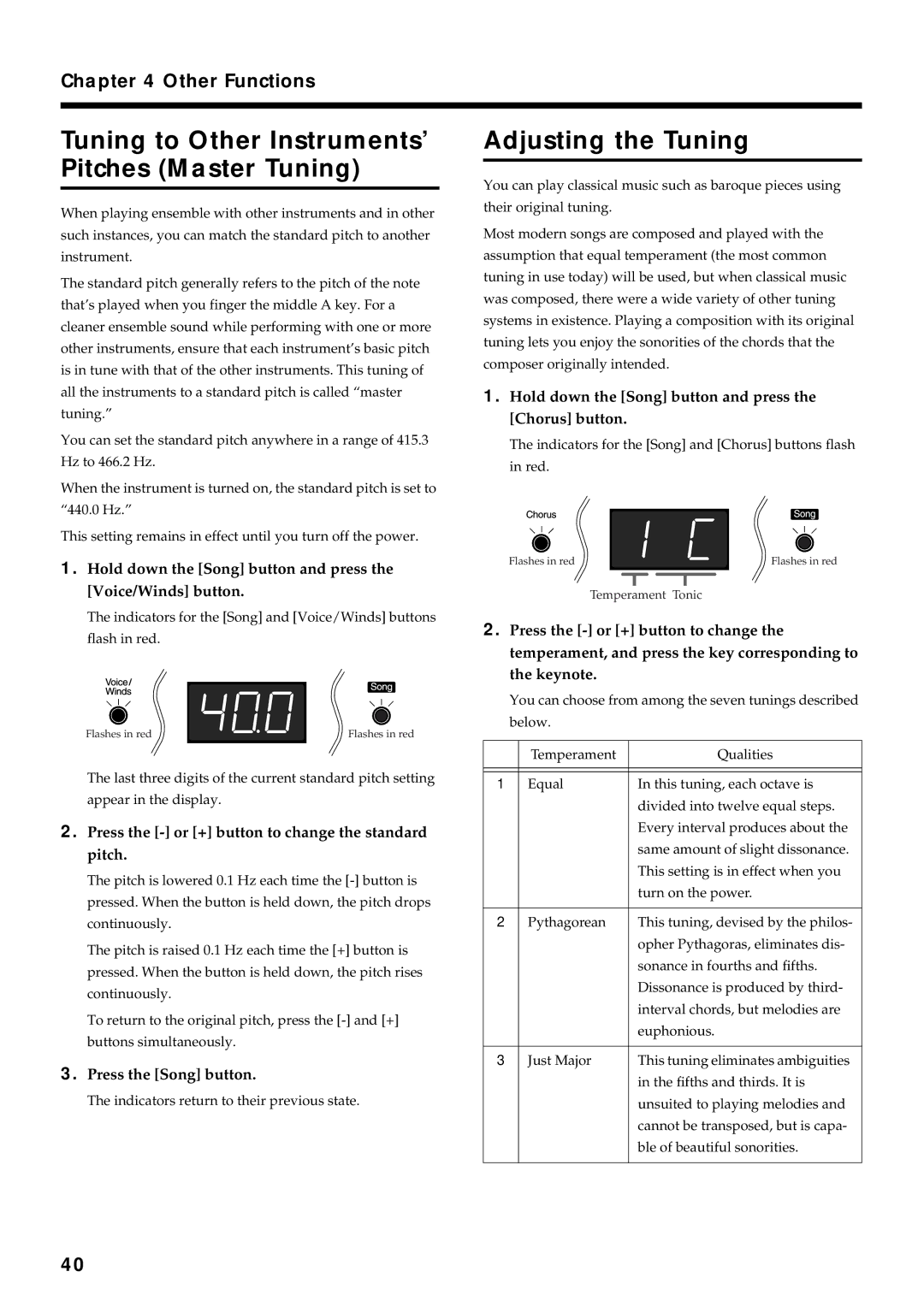
Chapter 4 Other Functions
Tuning to Other Instruments’ Pitches (Master Tuning)
When playing ensemble with other instruments and in other such instances, you can match the standard pitch to another instrument.
The standard pitch generally refers to the pitch of the note that’s played when you finger the middle A key. For a cleaner ensemble sound while performing with one or more other instruments, ensure that each instrument’s basic pitch is in tune with that of the other instruments. This tuning of all the instruments to a standard pitch is called “master tuning.”
You can set the standard pitch anywhere in a range of 415.3 Hz to 466.2 Hz.
When the instrument is turned on, the standard pitch is set to “440.0 Hz.”
This setting remains in effect until you turn off the power.
1.Hold down the [Song] button and press the [Voice/Winds] button.
The indicators for the [Song] and [Voice/Winds] buttons flash in red.
Flashes in red |
| Flashes in red |
| ||
|
|
|
The last three digits of the current standard pitch setting
appear in the display.
2.Press the [-] or [+] button to change the standard pitch.
The pitch is lowered 0.1 Hz each time the
The pitch is raised 0.1 Hz each time the [+] button is pressed. When the button is held down, the pitch rises continuously.
To return to the original pitch, press the
3.Press the [Song] button.
The indicators return to their previous state.
Adjusting the Tuning
You can play classical music such as baroque pieces using their original tuning.
Most modern songs are composed and played with the assumption that equal temperament (the most common tuning in use today) will be used, but when classical music was composed, there were a wide variety of other tuning systems in existence. Playing a composition with its original tuning lets you enjoy the sonorities of the chords that the composer originally intended.
1.Hold down the [Song] button and press the [Chorus] button.
The indicators for the [Song] and [Chorus] buttons flash in red.
Flashes in red |
|
|
|
|
|
|
| Flashes in red |
|
|
|
|
|
|
|
|
|
|
|
|
|
|
|
|
|
|
Temperament Tonic
2.Press the
You can choose from among the seven tunings described below.
| Temperament | Qualities |
|
|
|
|
|
|
1 | Equal | In this tuning, each octave is |
|
| divided into twelve equal steps. |
|
| Every interval produces about the |
|
| same amount of slight dissonance. |
|
| This setting is in effect when you |
|
| turn on the power. |
|
|
|
2 | Pythagorean | This tuning, devised by the philos- |
|
| opher Pythagoras, eliminates dis- |
|
| sonance in fourths and fifths. |
|
| Dissonance is produced by third- |
|
| interval chords, but melodies are |
|
| euphonious. |
|
|
|
3 | Just Major | This tuning eliminates ambiguities |
|
| in the fifths and thirds. It is |
|
| unsuited to playing melodies and |
|
| cannot be transposed, but is capa- |
|
| ble of beautiful sonorities. |
|
|
|
40
